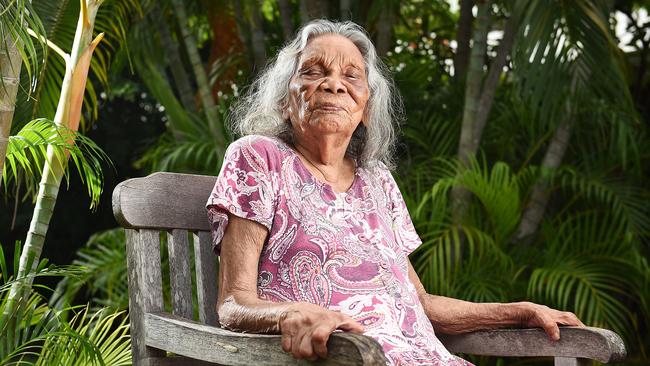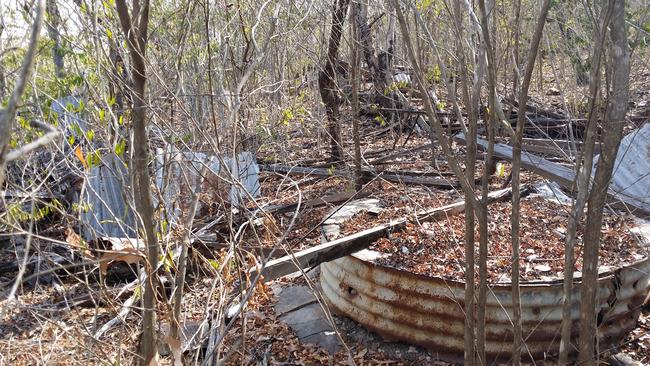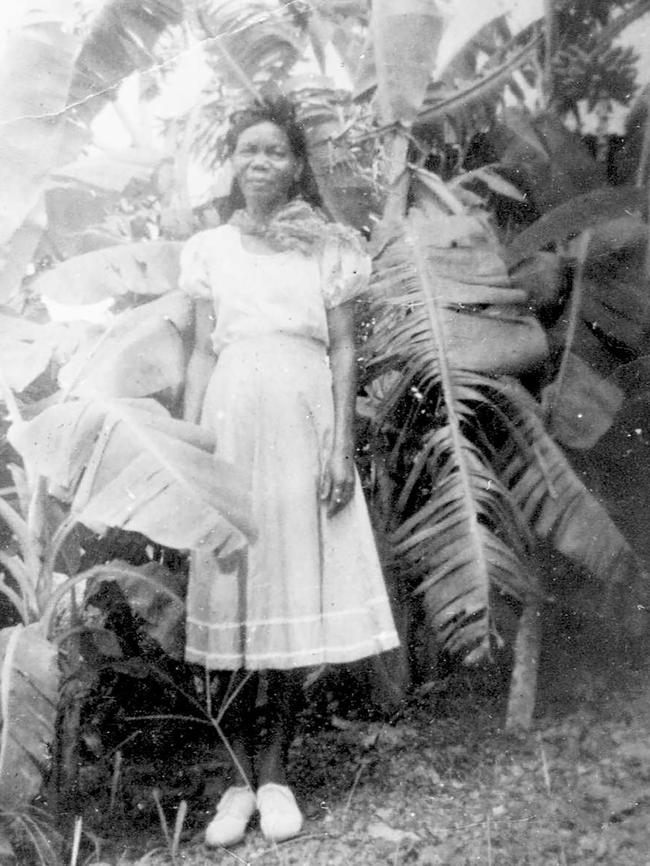Channel Island near Darwin housed leprosy sufferers between 1931 and 1955
CHANNEL Island masks an ugly past; remnants of which still lie beyond the barbed wire fence and the dense overgrown vegetation thriving from within it.

Northern Territory
Don't miss out on the headlines from Northern Territory. Followed categories will be added to My News.
ONE half of a notorious, tropical island situated a short distance from Darwin remains fenced off and frozen in time after it was abruptly abandoned 60 years ago.
Signs warn trespassers not to enter.
From the mainland and across the sparkling azure waters of Darwin Harbour, the secluded slice of paradise is a vision of perfection.
But the natural beauty of Channel Island masks an ugly past; remnants of which still lie beyond the barbed wire fence and the dense overgrown vegetation thriving from within it.
Hundreds, possibly thousands, of mostly indigenous people, including children, suffering leprosy were forcibly removed from their homes across the Northern Territory and sent by the Commonwealth Government to live in isolation at the Channel Island Leprosarium between 1931 and 1955.
Once ripped from the arms of their loved ones and banished to the island, many were subjected to forced labour and held captive there for years. And most were never to see their families again.
An estimated 140 people never made it out of the Channel Island Leprosarium alive, dying an early death from a range of illnesses and a lack of medical care. At least 60 bodies are thought to remain in unmarked graves on the island.
There was no known cure for leprosy —— a chronic bacterial disease that causes severe, disfiguring skin sores and nerve damage in the arms and legs — at the time. Those suffering the infectious disease were deemed ‘lepers’ and outcasts of society.
The site was originally built for use as a Commonwealth Quarantine Station in 1914 before being turned into a Leprosarium in 1931.
But facilities and supplies on the island were limited.

Department of Lands, Planning and the Environment heritage branch director Michael Wells said the Leprosarium boasted a clinic and two other main buildings used as dormitories, one for males and one for females.
“(It) was like a concentration (camp); it was very clear where the centre of things were, which was around those 1914 buildings, where most of the activities were situated,” he said.
“There was also a laundry and several outdoor buildings including the kitchen, meat house, a store and the first power house.
“There was a substantial kitchen with very large wood stoves. They seemed to manage to feed everyone. I don’t think anyone starved.
“But one of the issues was a big increase of patients quickly overwhelmed the facility.
“So there were lots of makeshift dwellings that people lived in, in order to cope with the situation. Some people in the main settlement who would make a hut for themselves on the more isolated part of the island.”
There were no staff quarters on the island. The patients were largely left to fend for themselves, with nowhere to run and nowhere to hide. They grew their own vegetables and cooked their own meals.

Mr Wells said the leprosy sufferers “couldn’t escape because (they were ill and) there was nowhere to go”.
“That’s why Channel Island was ideal; it wasn’t too far from Darwin to travel by transport but it wasn’t close enough to go on foot,” he said.
Mr Wells said life was difficult for the patients condemned to the Channel Island Leprosarium.
“It wouldn’t be far from the truth to say it was like a prison,” he said.
“There was always a problem.
“They had to have water brought in from the mainland once a week.
“If the pump broke down they had to bring it in by bucket from the boat to the storage facility.”
There was limited electricity, supplied only by a generator.
“It got to the point where they chopped basically all of the trees down for firewood and they had to import firewood and water. In the 1930s and 40s the island was almost completely denuded,” Mr Wells said.
“So if you can imagine on a hot day being in some of the buildings — some were like proper dormitories and some were like tin sheds — they must have just fried on a really hot build up day.
“It would have been very uncomfortable.
“And yet people bonded together and made their own fun … dress up parties and singalongs and things like that ... there are photos of lots of smiling faces.”
Mr Wells said optimism from authorities about the suitability of the island quickly gave way as the poor living conditions and lack of medical treatment became apparent.
“I think the problems that people faced were due to the fact they were isolated from their family and suffering a disease which in some cases was quite serious. Some people were quite disfigured from the disease so that would have been hard to deal with,” he said.
“By 1941 it was recognised officially that the Leprosarium should be relocated but WWII was happening so that was put off until more than a decade later.”
Mr Wells said the Catholic Church took over staffing the site following the Bombing of Darwin during World War II.
“Nuns ran the place ... they (built) a little chapel and records show there were weddings there.
“So you had this sort of touching side to it where even though you think the whole place was a hellhole and people would have given up hope, they struck up relationships and got married and people gave birth there.”
Nancy Gibbs, 87, the only known living survivor of the Channel Island Leprosarium, was among those married in the chapel.

Originally from the Tanami Desert, before falling victim to the Stolen Generation, Nancy now lives in a Darwin nursing home where she has been since 2011.
Her sweet and friendly demeanour hides any trace of a woman who spent much of the prime of her life in captivity.
She suffers dementia but still recalls bursts of information from her past.
“I was very young when I went (to Channel Island) ... The police came and got me ... I can’t remember (arriving),” Nancy told the NT News.
Nancy’s family estimates she was held captive in the Leprosarium for up to two decades until 1955.
No one can be sure how long she was there because records were reportedly destroyed in various natural disasters and WWII.
Nancy worked on the island as a nurse’s aide and helped deliver signals when Japanese aircraft were spotted during WWII.
“I worked hard,” she said.
“I used to do signals to the Larrakeyah Navy for food and medicine. I signalled across in Morse code (and turned the lamp on and off).”
Nancy met her husband Jack Gibbs, a fellow former leprosy sufferer, and another patient on the island.

The pair married on the island and built their own hut to live in. Remnants of ‘Jack and Nancy’s hut’ still exist today.
“My husband was a stockman and he couldn’t have children,” Nancy said.
“(People) said ‘don’t play around and have a baby or he will know it wasn’t his’.
“I stayed with him and I never played around.”
The couple was moved to the East Arm Leprosarium when the one on Channel Island closed in 1955. They both recovered from leprosy and were discharged years later. There are no known records to confirm which year that was.
Jack died from lung cancer in the 1990s but Nancy recalls him lovingly.
“He was a gentleman,” Nancy said.
“If anyone was swearing around a lady he would tell them to cut the swearing out.
“But he liked his smokes, I tried to make him stop, but he smoked too much.”
Nancy stayed single after her husband died. “I had no man after that. I got no one,” she said.
The only physical signs to remind Nancy of her years spent captive at the Channel Island Leprosarium are her crippled fingers and hands, a common side-effect of leprosy.
Mr Wells said Nancy’s life was extraordinary because many of the leprosy patients on the island suffered severe symptoms and never recovered or made it out alive.
“Disfigurement was quite common and so was amputation,” he said.
Mr Wells said a patient walkout to protest against poor living conditions in 1946 resulted in an inquiry but it wasn’t until almost a decade later when the survivors were finally transferred to the new East Arm Leprosarium in 1955.
“By then treatment was improved and patients were free to come and go, it was more like an outpatient clinic,” Mr Wells said.
The Channel Island Leprosarium is now owned by Territory Generation and managed by the Northern Territory Parks and Wildlife Commission.
The other half of the island is home to Power and Water Corporation’s power station.
But the future of The Channel Island Leprosarium site — now known as the Channel Island Conservation Reserve — remains uncertain.
Territory Generation spokesman Daniel Hall said sheets of building materials at the Leprosarium were riddled with asbestos and unauthorised access was prohibited as a result.
Parks and Wildlife Commission NT spokesman Edwin Edlund said the department was “working with Territory Generation to remediate the site and there are no other plans for it currently”.
For now, the Channel Island Leprosarium site, which endured Cyclone Tracy and WWII, remains unspoilt by humans since closing 60 years ago.
Remnants of the stone buildings and tin huts which once provided shelter to its occupants now scatter the land, among a field of loose branches and leaves. Trees sprout through rusted bed frames, where many dreams of returning home to faraway lands were once dreamt. And upturned beer bottles partially buried in the ground still line leaf-laden pathways, which hundreds of leprosy sufferers once walked. A jetty where boats used to deliver drinking water still provides a front-row seat for majestical Territory sunsets. Vegetation grows wildly and beyond the restraints of the barbed wire fence; freer than most of those who were once held captive there ever had the chance to be. And the sun, once witness to the lives of those who inhabited the site, continues to rise and set over the idyllic island, shining rays of light over its dark and shameful past.



